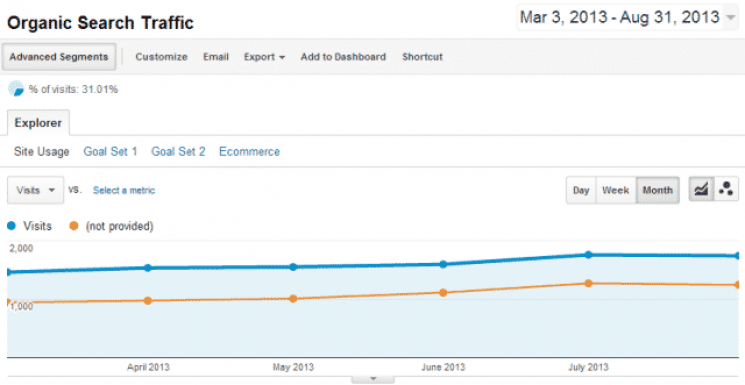Knowing what users search for through keywords is an essential and valuable tool in your box of SEO goodies and can steer the content and creation of your online business. Have you delved into your keyword report in Google Analytics only to find your most prized and most popular keyword is (not provided). Potential useful data is locked out with no obvious access to it. But what does (not provided) actually mean and what can you do about it?
If you’re a website owner you’ll want to know which keywords are driving traffic to your site. Knowing Google’s love of tracking virtually everything, you would be forgiven for assuming that even (not provided) keywords are tracked, somewhere, somehow. Surely there must be a way of getting some value out of this hidden data? Actually, yes there is, but first we need to understand what exactly a (not provided) keyword is.
What is (not provided)?
Back in 2011, Google announced that they would no longer show keyword data that originates from secured searches in order to protect the privacy of logged in users. According to Google, a secured search is whereby a user is logged in to Google or using a secure connection. When this happens, Google Analytics will show the query term as (not provided).
Recently, Firefox 14 became the first browser to include a secured search box by default, with iOS and Chrome following. With these platforms being so popular, the volume of secured searches skyrocketed. Currently, (not provided) makes up over 50% of Google search traffic when averaged across a great number of sites. For certain sites, this figure can get as high as 70%!
Why is it hidden?
Google states that (not provided) is all about user privacy, but this may be just part of the truth. While keyword data might be blocked in Google Analytics, a full keyword report is still available in Google Adwords if you are running paid ads.
Surely if the main and only issue was about privacy and providing a secure search then this would apply in all situations across the board? Google has courted controversy with this seemingly double standard and their motives behind blocking keywords is under scrutiny, with accusations from some quarters of a downright hypocritical policy. It seems that while user privacy is a commendable reason to keep Google Analytics at bay, these secrets and user privacy can be unlocked for a price.
Uncovering (not provided) keyword data
The good news is that this keyword data is not totally hidden in that you can guess keywords by experimenting with dimensions and metrics in Google Analytics. It might not be the most accurate or precise method but you can at least get some idea about what hidden keywords exist.
We’ve tried and tested two of the most useful data analysis tools. They are not overly complicated, and most importantly, they work:
Keyword report by landing page
Creating a customized report in Google Analytics to view the (not provided) keyword data by landing pages, allows you to guess these keywords. Basically, the report shows the number of visits each landing page receives from (not provided) keywords. This way you can gain an insight into the performance of specific and landing pages and have a better chance of guessing the keywords.
Here’s what the report looks like for Pronto:
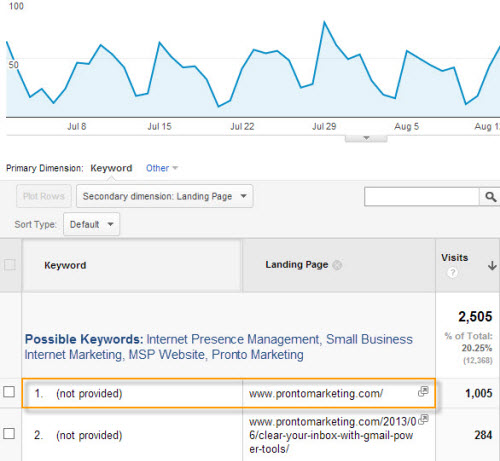
In the example above, people who landed on our homepage likely searched for our primary keywords on that page or our brand name. Those hidden keywords could be something along the lines of Internet Presence Management, Small Business Internet Marketing, MSP Website, Pronto Marketing, etc.
On the other hand, people landing on blog articles likely search for keywords around the article topic. If you look at Item 2 in the image above, you’ll see that the blog article is about ‘Gmail Power Tools’ and the visits must have come from queries like: clean your inbox, gmail power tools, gmail inbox, etc.
Here’s how to gain access to the keyword report:
1. From the main page of your Analytics account, head to the sidebar and go to Organic Search Traffic report. Then click on (not provided).
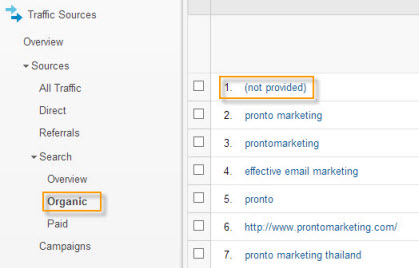
2. You should see the report for (not provided) now. Click on Secondary Dimension, type in Landing Page in the search box and then click on Landing Page under Traffic Sources.
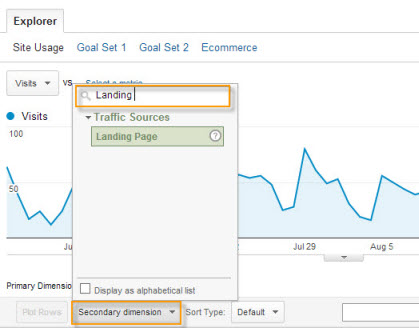
3. The report is ready! But we’re going to create a shortcut so you can come back later and view the report with just one click. You can do this by:
- Clicking on Shortcut and the Add Shortcut dialogue box will pop up.
- Entering a name for the shortcut and then hitting OK. You should see the new shortcut appear under Shortcuts in the sidebar.
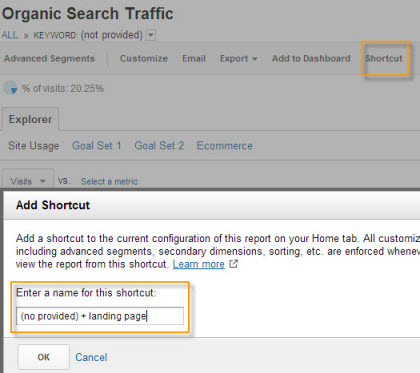
Keyword data from Google Webmaster Tools
The search queries report, found in Google Webmaster Tools, lists the keywords which send you search traffic. The advantage of this is that it shows impressions, clicks, click-through-rate (CTR), in addition to average position. These metrics can really help you analyze the performance of your keywords.
You can view the report by:
- Logging into Google Webmaster Tools (Note: you’ll need to have already verified your domain with Webmaster Tools in order to see this report)
- Clicking on Search Traffic and then Search Queries on the left-hand menu.
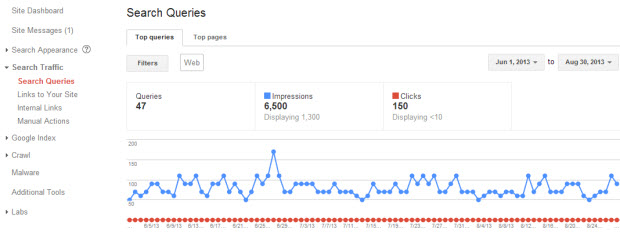
By default, you will see the keyword data from web search results. But you can also view image, mobile and video searches by setting filters.
Here’s the list of keywords that you will see underneath the graph, for our example. The list is quite comprehensive and you can arrange the order of the keywords by impressions, clicks, CTR, or average position.
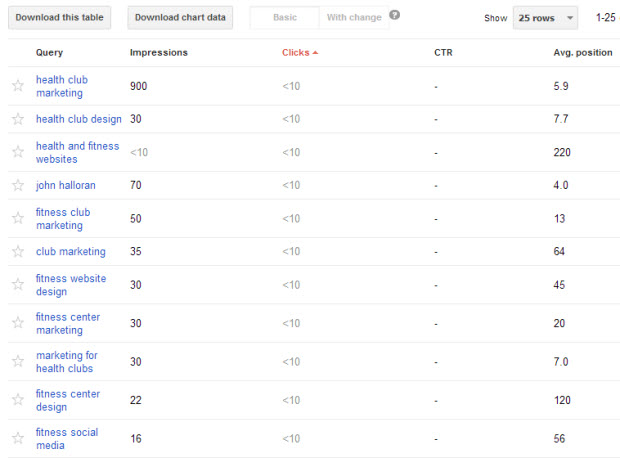
While this data isn’t a perfect picture it does provide a valuable insight into how people are finding your site which you would otherwise miss with Google Analytics. On top of this, you might even discover some missed opportunities e.g., that you are receiving a high number of impressions but a low number of clicks. Data like this can help determine any adjustments in keyword optimization on your site.
Traffic related to (not provided) keywords has been on the rise since it was first introduced in 2011. There’s greater use of mobile devices for connecting to the Internet, with secure searches set as default for most mobile browsers. While Google might be keeping some golden nuggets of information hidden, there are ways you can dig down, unlock the mystery and uncover a treasure trove of useful missing keyword data.
